The Government of India tabled The Indian Antarctic Bill, 2022 on the floor of the Lok Sabha on last April 1, 2022. (The Lok Sabha, constitutionally the House of the People, is the lower house of India’s bicameral Parliament,)
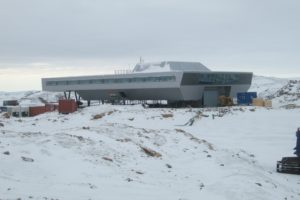 The Bill is introduced to “provide for the national measures for protecting the Antarctic environment and dependent and associated ecosystems and to give effect to the Antarctic Treaty, the Convention on the Conservation of Antarctic Marine Living Resources and to the Protocol on Environmental Protection to the Antarctic Treaty and for matters connected therewith or incidental thereto”.
The Bill is introduced to “provide for the national measures for protecting the Antarctic environment and dependent and associated ecosystems and to give effect to the Antarctic Treaty, the Convention on the Conservation of Antarctic Marine Living Resources and to the Protocol on Environmental Protection to the Antarctic Treaty and for matters connected therewith or incidental thereto”.
While the Lok Sabha has passed the Bill, it will now be tabled in the Council of the States for passing.
 India signed the Antarctic Treaty on August 19, 1983, and was soon granted the observer status on September 12, 1983. The protocol entered into force for India on January 14, 1998. India has active research stations Maitri (WAP IND-Ø3) at Schirmacher Hills, Bharati (WAP IND-Ø4) at Larsemann Hills as well as Himadri station in the Arctic — and it now belongs to the elite group of nations that have multiple research stations within the Polar Region.
India signed the Antarctic Treaty on August 19, 1983, and was soon granted the observer status on September 12, 1983. The protocol entered into force for India on January 14, 1998. India has active research stations Maitri (WAP IND-Ø3) at Schirmacher Hills, Bharati (WAP IND-Ø4) at Larsemann Hills as well as Himadri station in the Arctic — and it now belongs to the elite group of nations that have multiple research stations within the Polar Region.
Though there is no Arctic Bill, for the simple reason that there is no Arctic Treaty, India did roll out its Arctic Policy in January 2021. There are currently five states from Asia that enjoy the status of ‘Observer’ in the Arctic Council. These states are China, Japan, India, South Korea and Singapore, and all of them joined the Arctic Council in 2013.
Indian Antarctic Bill 2022: Key Points
1-The Bill passed by the Lok Sabha earlier this month seeks to protect the Antarctic environment, and also regulate activities in the region.
2-The provisions will apply to any person, vessel or aircraft part of an Indian expedition to Antarctica under a permit issued under the Bill.
3-There will be a central committee on Antarctic Governance and Environmental Protection, which will be chaired by the secretary, Earth Sciences, and have 10 members, not below the rank of joint secretary, from ministries and organisations such as defence, external affairs, National Centre for Polar and Ocean Research, and National Security Council Secretariat. Two experts from Antarctic environment and geo-political fields will also be part of the panel that will grant permits for various activities, implement and ensure compliance of relevant international laws for protection of Antarctic environment, and negotiate fees/charges with other parties for activities in Antarctica, among other functions.
4-The Bill prohibits nuclear explosion or disposal of radioactive wastes in Antarctica, introduction of non-sterile soil, and discharge of garbage, plastic or other substances into the sea that are harmful to the marine environment.
5-The Bill specifies penalties for violation of its provisions.
Read more at: What Is Indian Antarctic Bill 2022 And What Its Provisions Aim To Achieve In North And South Poles (abplive.com)

 After months of preparation, a crew of 12 scientists, explorers, and staff at Europe’s Concordia Research Station in Antarctica (
After months of preparation, a crew of 12 scientists, explorers, and staff at Europe’s Concordia Research Station in Antarctica (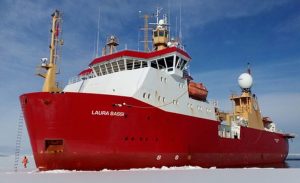 The mission of the I/B Laura Bassi (ex I/B Ernest Shackleton) , owned by the Italian
The mission of the I/B Laura Bassi (ex I/B Ernest Shackleton) , owned by the Italian 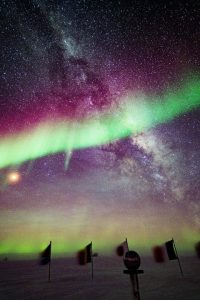 On May 15th, Thomas Leps tooks a break to go outside and photograph the lunar eclipse from the geographic South Pole. Leps operates the international BICEP array at the Amundsen–Scott South Pole Station (
On May 15th, Thomas Leps tooks a break to go outside and photograph the lunar eclipse from the geographic South Pole. Leps operates the international BICEP array at the Amundsen–Scott South Pole Station ( Aimee Sharpe, is the daughter of John Sharpe VK2FR (aka VK2ANT) (
Aimee Sharpe, is the daughter of John Sharpe VK2FR (aka VK2ANT) (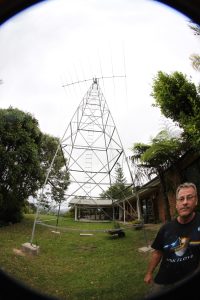 Aimee wrote: «My father’s original call sign VK2FR has recently been taken over by a new person, which I didn’t realize and I am so upset. It is my fault though, I didn’t see the emails to renew. So now I want to make sure I can keep VK2ANT .
Aimee wrote: «My father’s original call sign VK2FR has recently been taken over by a new person, which I didn’t realize and I am so upset. It is my fault though, I didn’t see the emails to renew. So now I want to make sure I can keep VK2ANT .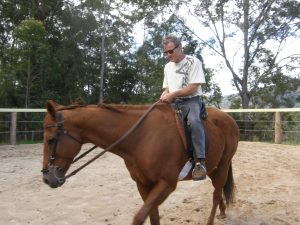 Aimee said that the plan is very exciting: « I can’t wait to see Antarctica. It will be an emotional experience, but very meaningful and I know my dad will be there with me in spirit. It will depend on the weather as to which islands/bays we can stop at, but potentially British Port Lockroy, Chinese Great Wall, Argentine Esperanza and Argentine Almirante Brown. However this is a very loose plan that may change. I think I will just have to be flexible and see when we get there».
Aimee said that the plan is very exciting: « I can’t wait to see Antarctica. It will be an emotional experience, but very meaningful and I know my dad will be there with me in spirit. It will depend on the weather as to which islands/bays we can stop at, but potentially British Port Lockroy, Chinese Great Wall, Argentine Esperanza and Argentine Almirante Brown. However this is a very loose plan that may change. I think I will just have to be flexible and see when we get there».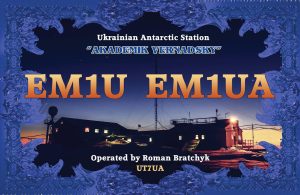 A Ukrainian scientist has told Sky News of her heartbreak at leaving behind loved ones in a war zone while she carries out vital climate research 10,000 miles away in Antarctica.
A Ukrainian scientist has told Sky News of her heartbreak at leaving behind loved ones in a war zone while she carries out vital climate research 10,000 miles away in Antarctica.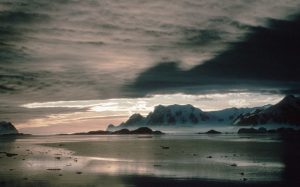 Clouds come in myriad shapes, sizes and types, which control their effects on climate. New research led by the University of Washington shows that the splintering of frozen liquid droplets to form ice shards inside Southern Ocean clouds dramatically affects the clouds’ ability to reflect sunlight back to space.
Clouds come in myriad shapes, sizes and types, which control their effects on climate. New research led by the University of Washington shows that the splintering of frozen liquid droplets to form ice shards inside Southern Ocean clouds dramatically affects the clouds’ ability to reflect sunlight back to space. In Febr. 2014, Josè V Jaramillo (HC3TAC) has been active for 2 days from Punta Arenas-Chile (8 & 9 february 2014).
In Febr. 2014, Josè V Jaramillo (HC3TAC) has been active for 2 days from Punta Arenas-Chile (8 & 9 february 2014).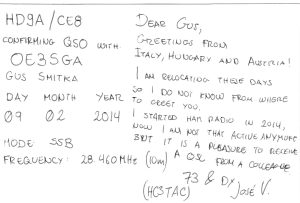 We have been lucky to catch Jose HC3TAC in Italy so we organized the best way to confirm the contacts with those OM who made QSO with him when he was down South.
We have been lucky to catch Jose HC3TAC in Italy so we organized the best way to confirm the contacts with those OM who made QSO with him when he was down South.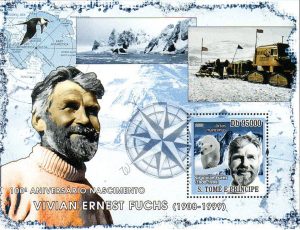 Sir Vivian Ernest Fuchs (11 February 1908 – 11 November 1999) was an English explorer. Fuchs is best known as the leader of the Commonwealth Trans-Antarctic Expedition, a Commonwealth-sponsored expedition that completed the first overland crossing of Antarctica via the South Pole in 1958
Sir Vivian Ernest Fuchs (11 February 1908 – 11 November 1999) was an English explorer. Fuchs is best known as the leader of the Commonwealth Trans-Antarctic Expedition, a Commonwealth-sponsored expedition that completed the first overland crossing of Antarctica via the South Pole in 1958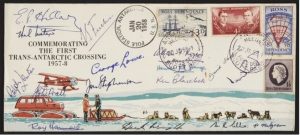 In 1958, Fuchs was knighted by Queen Elizabeth II. He co-wrote, with Sir Edmund Hillary The Crossing of Antarctica. In 1959 he was awarded the Hans Edge Medal by the Royal Danish Geographical Society.
In 1958, Fuchs was knighted by Queen Elizabeth II. He co-wrote, with Sir Edmund Hillary The Crossing of Antarctica. In 1959 he was awarded the Hans Edge Medal by the Royal Danish Geographical Society.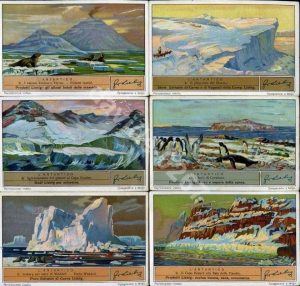 A friend, sent
A friend, sent